Field Test of the Vixen HR Eyepieces
By: William A. PaoliniDiscuss this article in the forums
October 7, 2016Bill Paolini, author of the book "Choosing and Using Astronomical Eyepieces", reviews the line of Vixen HR high-resolution eyepieces. Designed to provide superb lunar and planetary images, these short-focal length eyepieces provide very high magnifications with short focal-length telescopes. But with such high magnifications, do these eyepieces actually work as advertised, and under all conditions? Read about Bill's experiences with the Vixen HR eyepieces in the review below. 1: The Vixen HR eyepieces in 2.4mm, 2.0mm, and 1.6mm focal lengths.
1: The Vixen HR eyepieces in 2.4mm, 2.0mm, and 1.6mm focal lengths.1. Overview
The new HR-series eyepieces from Vixen are a rather unconventional offering with focal lengths as short as 1.6mm. They may also especially appeal to the minimum glass planetary purist as they contain only 5 glass elements. Vixen touts these new eyepieces as having an on-axis Sstrehl ratio of almost 1.0 (i.e., perfect) and with the off-axis Strehl maintained at more than .97 when used in conjunction with a precision Apochromatic refractor. The optics are coated with Vixen's premium AS (Astronomy Special) Coatings, designed to achieve an extremely high 99.9% transmission rate per air-glass interface (also used on their VSD 100/f3.8 ultra-fast astrograph). Given their 5-element, 3-group design, the resulting overall theoretical transmission would work out to be an extremely high 99.7% for the eyepiece.
Basic stats on the eyepieces are as follows:
Focal Length (mm) AFOV (°) Eye Relief (mm) Lenses/Groups Coatings Weight (oz) Parfocal 1.6 42 10 5/3 AS-Coated 4.2 Yes 2.0 42 10 5/3 AS-Coated 4.1 Yes 2.4 42 10 5/3 AS-Coated 4.1 Yes Note -- Manufacturer supplied data.
2. Build Quality and Form Factor
When handling the HR eyepieces, it is immediately apparent that they have a high quality build where everything was taken into consideration. The eye lens is very minimally set into the housing and very tightly touching the entrance pupil opening. The top surface is flat black and the entrance pupil is shallowly beveled so that extraneous light is reflected away rather than down onto the lens surface, unlike non-beveled designs.
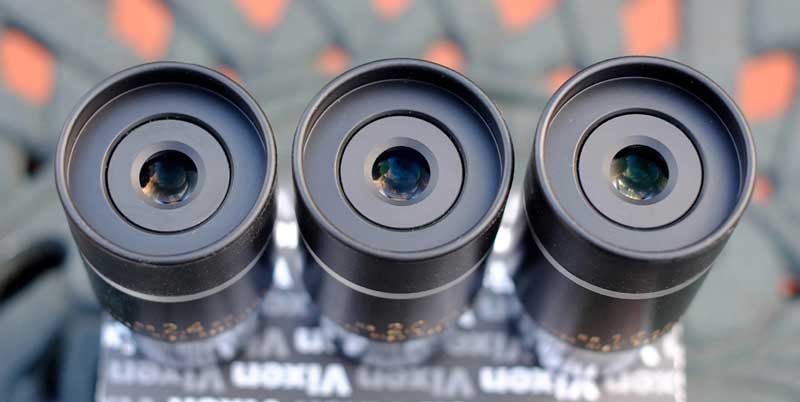 Fig 2: Eye lenses of the Vixen HR eyepieces. Right to left: 2.4mm, 2.0mm, 1.6mm.
Fig 2: Eye lenses of the Vixen HR eyepieces. Right to left: 2.4mm, 2.0mm, 1.6mm.Examining the barrel, we find a nicely shallow beveled taper that alleviates any sharp angles that might catch compression rings during insertion or extraction, and the addition of a removable bottom baffle when no filters are in use to provide the ultimate suppression of contrast-robbing stray light.
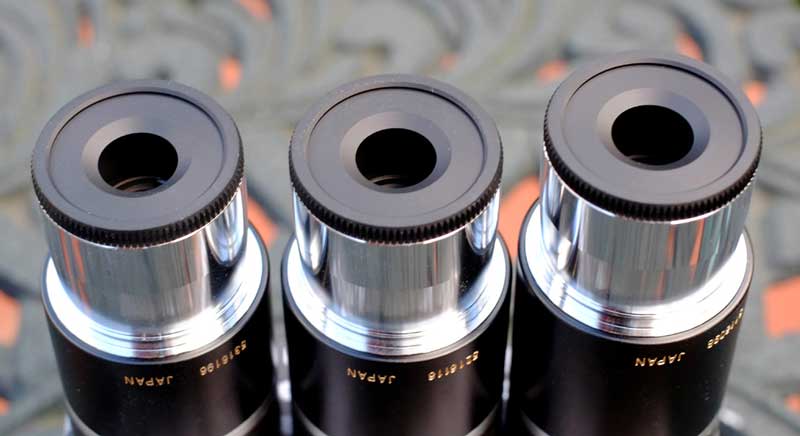 Fig 3: Field lens baffle of the Vixen HR eyepieces. Right to left: 2.4mm, 2.0mm, 1.6mm.
Fig 3: Field lens baffle of the Vixen HR eyepieces. Right to left: 2.4mm, 2.0mm, 1.6mm.Removing this field- lens baffle reveals an impressively darkened interior where all surfaces are flat blackened, including vertical surfaces which are often the drivers of unwanted internal reflections. Removing the top rubber eye guard reveals 30mm diameter, 0.75mm pitch threading (note that Vixen currently offers no advertised options for using these threads for any accessories).
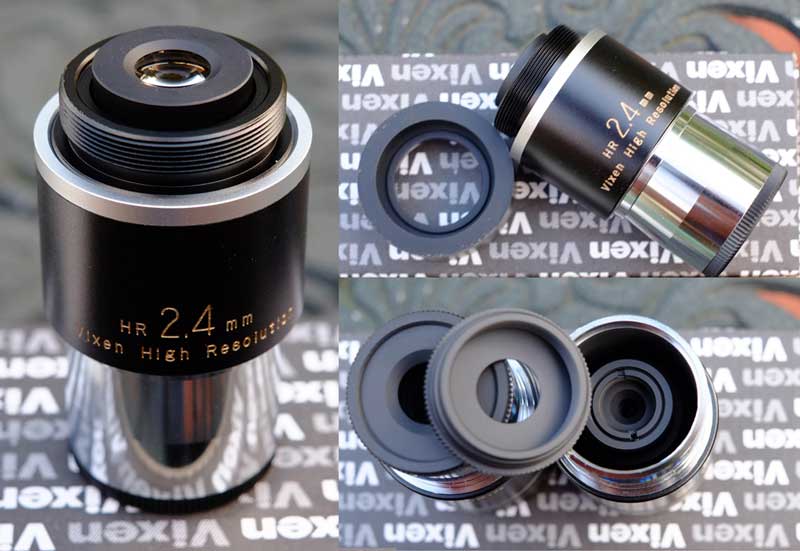 Fig 4: Vixen HR eyepiece with eye guard and field lens baffle removed.
Fig 4: Vixen HR eyepiece with eye guard and field lens baffle removed.Overall the attention to detail in the build of the Vixen HR eyepieces was quite impressive, and for me reminiscent of the excellent attention that was given to the highly respected Pentax XO planetary eyepieces. It has been a long time since a new planetary eyepiece has been made to this level of attention and I was quite happy to finally see another premium offering like this for planetary observers.
3. Observational Testing
Observational testing was conducted in a suburban location in Northern Virginia, west of Washington, D.C., where the light pollution levels varied in the moderate range, depending on the particulates and water vapor in the atmosphere, with average limiting magnitudes between 3.5 and 4.5, occasionally going as deep as 5.5. The Vixen HR eyepieces were tested with the 3.2" Vixen 81S f/7.7 Apo, the 4" Takahashi TSA-102 f/8 triplet Super Apochromat refractor, the 6" Lunt 152 f/7.9 ED-Apochromat refractor, and the 10" Company Seven certified Orion XT10 f/4.7 Dobsonian reflector equipped with a Tele Vue Type I adjustable- top Paracorr.
3.1 The Moon
Section text and description hereI conducted observing tests over several months using each of the telescopes listed. I began however with the TSA-102. My first target was the Moon as it is always such an easy target, especially when using high magnifications. I started with the 2.4mm which produced 340x, then the 2.0mm which produced 408x, and finally the 1.6mm which produced 510x. My expectations were not high as these magnifications are beyond the typical. My reaction with each as I flipped them through the focuser was to say to myself, "This is crazy!" I kept repeating that as I observed because I just could not believe my eyes. Beyond all my expectations, the views were crisp and well defined in both the 2.4mm and 2.0mm, and just slightly soft in the 1.6mm. Focusing of course is quite critical at these magnifications and a very slight tap of the fine focus knob was needed with the 1.6mm to bring the view into a sharper rendering like the other eyepieces were producing. So the field stops were precisely spot on in the 2.4mm and 2.0mm so that they were exactly parfocal, and the 1.6mm required just a slight move of the fine focus knob to bring its view into best rendering. Most parfocal eyepieces I find are not exactly parfocal, so these Vixen HRs were comparatively quite impressive with precision field stop placement.
As the night progressed, I ended up spending quite a lot of time doing lunar observing with these eyepieces, abandoning my testing for the moment on the first outing as the views were mesmerizing and the eyepieces were unexpectedly so comfortable to use. Through the 1.6mm HR, the Montes Apenninus lunar mountain range was more dimensional than I had ever seen. It felt like I was traversing its slopes rather than simply observing from afar.
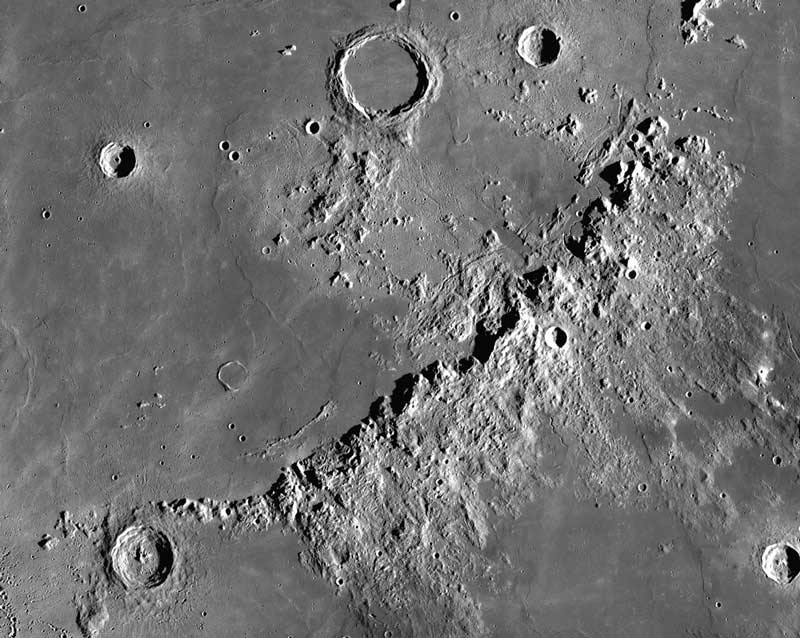 Fig 5: The Montes Apenninus lunar mountain range (Credit: NASA, Lunar Reconnaissance Orbiter).
Fig 5: The Montes Apenninus lunar mountain range (Credit: NASA, Lunar Reconnaissance Orbiter).Similarly, the details of the walled plain near W. Bond to the north of the Mare Frigoris was also an amazing view and I spent a lot of time just on that region. Then notching it down with the 2.4mm and 2.0mm HRs I examined the central peaks of crater Herschel, then looked at the crags and cracks in the crater wall of Tyco, and then I found an intensely interesting outcropping of small peaks about 20 miles east of crater Fontenelle. After observing these features I randomly wandered around the lunar surface observing a wealth of intricate crater floor details like I had never done before. The image scale at these magnifications was of course incredible for a little 4" scope to see, and this image scale did indeed allow me to take obvious note of small details I would have easily missed at conventional magnifications.
All in all, this was an astounding first experience with the Vixen HR eyepieces, and completely not the experience I expected. Of course, for all these observations I was careful to ensure my equipment was fully thermally stable and that the atmospheric seeing was similarly excellent. With those items properly attended to the precision of the TSA and the Vixen HRs allowed some truly astounding Lunar observing!
In later tests with the Moon, I used the Vixen HRs in the Vixen 81S Apo, the Lunt 152 ED-Apo, and even in my Company 7 certified Orion XT10 Dob where these eyepieces produced magnifications of 500x, 600x, and 750x. With these three scopes all three HR eyepieces gave nicely crisp views in the Lunt 152 and the XT10, but in the Vixen 81S the 1.6mm HR seemed to push that optic a little further than its 81mm of aperture could take. I found the views were comparatively soft using the 1.6mm HR in the Vixen 81S at 390x, but nicely sharp using the 2.0mm HR at 311x. Again, as long as both the scope and the seeing were stable, then the views were spectacular, as crazy as this might seem at these magnifications through small apertures. But the best part of the experience for me was that the views were so precise that it really was a joy to use these eyepieces, having razor sharp field stops, fields of view rich in contrast, absolutely zero unwanted light artifacts, and commanding focus snap. Memorable sights through the XT10 were with the 1.6mm HR at 750x. At this magnification the bright rings inside crater Vitello were a fascinating observation, and the cluster of four small craters in crater Prinz made me feel like I was observing something smaller than I should be able to, each of these tiny craters having such well-defined crater rims. And then when I turned to the crater wall in Copernicus and the rilles on the floor of crater Gassendi, it was overwhelming just how many tiny details were so easy to see.
3.2 The Planets
Planetary testing was conducted over several weeks using the Vixen 81S Apo, TSA-102 Apo, and Lunt 152 ED-Apo. Planets observed were Mars and Saturn. At the time, the two planets were in relatively close proximity making the testing quite enjoyable as it was quick and easy to switch back and forth between the two.
My expectations were definitely not hopeful for planetary observing at the high magnifications and small exit pupils that would result using such short focal length eyepieces. I also anticipated the small exit pupils would probably show the planets too dimly to observe effectively. With that in mind, I took time for my eyes to dark adapt prior to observing and only used an extremely low magnification eyepiece for quick centering of the target. As a result, the planets were surprisingly observable even though the exit pupil with the 2.0mm HR eyepiece in the TSA was only a scant 0.25mm. Once Saturn was in the field of view and sharply focused it was a thrilling sight to see at 408x through my little 4" Apo! First the sheer size of all the major features on Saturn was impressive as I am not used to observing the planets at these magnifications and typically use an exit pupil about 0.7mm. The size of the A-ring was amazing and to my surprise, the Enke minima was also visible; something I easily can catch in my Lunt 152, but only very rarely in the smaller TSA. The darkening at the polar hexagon was clearly visible as well as the various atmospherice bands, and I could even see variations in the color and brightness along some of the bands. This latter feature I had never noted before in my Saturn observations with the exception of when I was testing the TMB Monocentric and Pentax XO eyepieces in the much larger 10" Dob. So for me it was a real treat to see these levels of color and brightness details laterally within the individual bands on Saturn with the small 4" TSA. Finally, after moving to the 1.6mm HR, the views were similarly detailed but the view was not quite as etched as what I was getting with the 2.0mm HR; all the previous details were still there to be seen though.
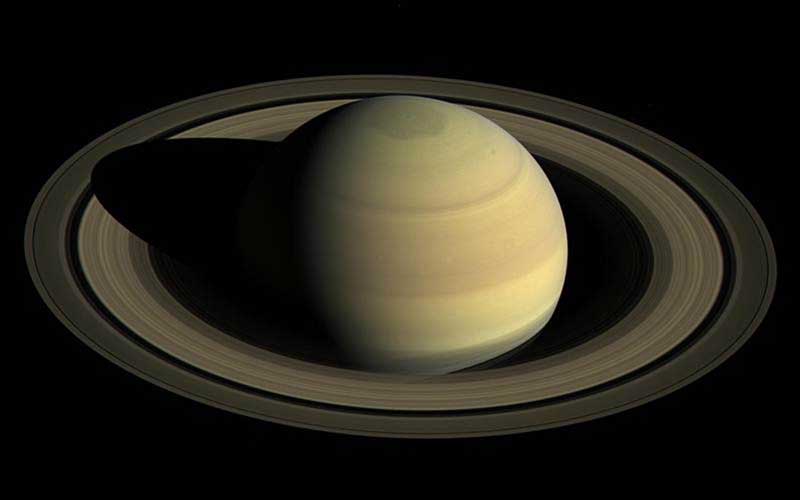 Fig 6: Saturn, Approaching Northern Summer (Credit: NASA/JPL-Caltech/Space Science Institute, PIA21046)
Fig 6: Saturn, Approaching Northern Summer (Credit: NASA/JPL-Caltech/Space Science Institute, PIA21046)Next I tried the 2.4mm HR and as expected everything was brighter although at a slightly smaller image scale. The variations of colors and brightness within individual brands on Saturn was a little more striking with the brighter lower magnification view of 340x (0.3mm exit pupil). At this point I decided to compare my 6mm ZAO II on a Siebert 2.5x Barlow to the views I just observed using the 2.4mm HR. To my surprise, the changes in colors and brightness within the individual bands of Saturn were not discernable at all through the Barlowed ZAO II. Moving back to the HR 2.4mm, they were again easy to see. So as I moved between the HRs and the Barlowed ZAO, more planetary details could be seen through the HRs. As I used the HR eyepieces more and more it became clearly evident to me that their level of contrast was a bit better than even my much revered ZAO. A bit surprising for me, and unexpected, but their superior contrast and inkier black backgrounds whether observing planets or star clusters was evident. I also Barlowed several other eyepieces I had as well, like the 5mm XO and the 7mm DeLite and the 5mm and 7mm XWs. In all cases, the Barlowed eyepieces did not keep pace with the views provided by the equivalent focal length Vixen HRs. In addition, from an ergonomic standpoint, the Barlowed counterparts fell even further behind as they became unwieldy long towers compared to the native short focal length HRs.
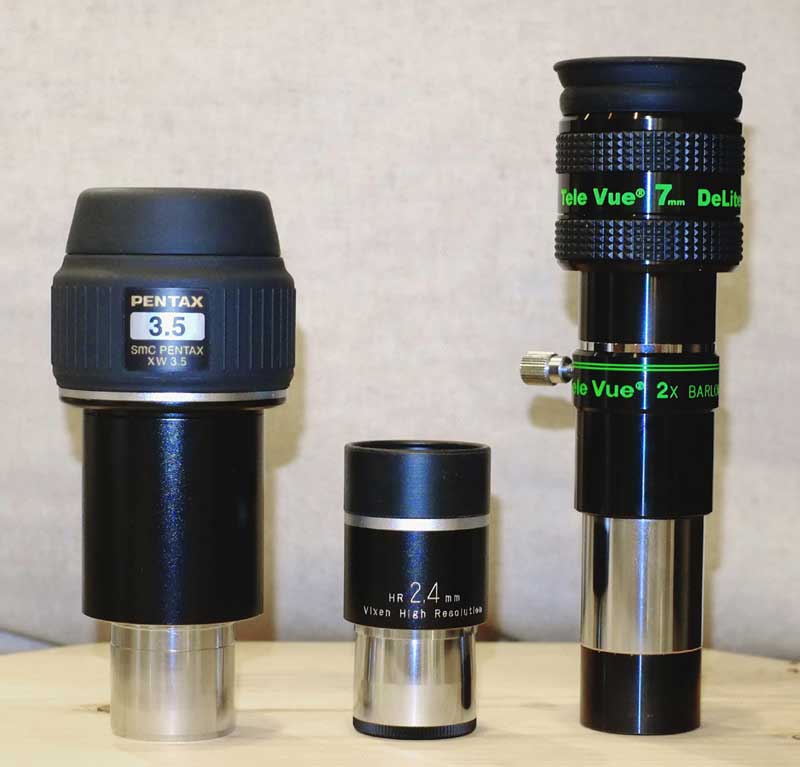 Fig 7: Small size and light weight of the Vixen HR compared to Barlowed wider field offerings.
Fig 7: Small size and light weight of the Vixen HR compared to Barlowed wider field offerings.Moving to Mars, where features are much more elusive than the broad swatches of Saturn, I was again treated to fantastic performance with planetary features from the polar regions to Mare Sirenum, Utopia, and more, all clearly and crisply showing at these ridiculously high magnifications for my TSA. Turning to the Vixen 81S and the Lunt 152 produced similar results with both planets displayed as satisfyingly crisp and feature rich though the 2.4mm and 2.0mm HR eyepieces, but then being just a little softer through the 1.6mm. On all the nights I tested, this behavior remained. I was able to get some brief "moments" when the 1.6mm would perform as well as the other two on the planets, letting me know that the slightly degraded performance was likely due to the seeing not being up to what was needed for this extreme focal length. Nonetheless, the Moon was more forgiving in this respect and let the little 1.6mm easily show me what it was capable of delivering. Overall, I have to rate this Vixen HR line of eyepieces right up there with the best top shelf planetary eyepieces ever produced -- probably a notch better since in addition to providing the same unparalleled minimum glass and minimum scatter views, they also provided the views in comfort with their comparatively generous eye relief.
3.3 Nebula, Star Clusters and Double Stars
While I did try observing some star clusters and double stars with the new HR eyepieces, given that their magnifications were so high in my telescopes and their AFOVs relatively small, it became an arduous task with my non-tracking alt-az mounts. Doubles in particular were impractical, especially in my longer 1200mm focal length scopes, as often the magnification was so high that the components either barely fit in the field of view, or did not fit in the field of view. Star clusters were a little easier given the greater context they have with many stars in the field of view. The Double Cluster in particular was quite easy as I peered into the very heart of that cluster. And again, returning to some Barlowed counterparts for comparison, it was apparent that the contrast of the HRs was superior, even compared to my Barlowed ZAO and XO -- backgrounds around the stars were darker in the HR and the dimmest stars were also brighter and easier to see; even when observing M57, it was fairly easy to see the nebula as being brighter in the HR compared to the Barlowed 6mm ZAO or 5mm XO or 5mm DeLite. Star points also came across as being slightly tighter as well in the HRs compared to other equivalent Barlowed premium eyepieces.
4. Considerations When Using "Extreme" Magnifications
You may also hear some argue that such magnification extremes from small aperture telescopes are nothing but "empty" magnification and therefore not recommended. The time-honored guideline has been to use about 50x/inch of aperture as a maximum magnification. This rule is also coincidental with the recommendations by some of observing with an exit pupil no smaller than 0.5mm, as the 50x/inch rule for any aperture also yields an approximate 0.5mm exit pupil. Small exit pupils such as this produce fairly dim views and tend to exacerbate "floaters" common in the eyes as we age. Then the concept of "empty" magnification comes from an assessment of the resolving capability of the instrument's aperture relative to the resolving capability of the human eye, which, when the magnification is sufficient, will not show any additional details. This point is generally reached well below the 50x/inch rule. So, the argument goes, why add more magnification, dimming your view, when your eye is capable of seeing all the details that the aperture can produce ats lower magnifications where the image is brighter and the MTF of the resulting view allows improved perception? Note that The MTF, or modulation transfer function, is a measure of the degree of contrast degradation as an image is passed through an optical system.
The physics-based argument that is often cited above relative to practical magnifications, is of course, theoretical in nature and models ideal conditions with limited variables affecting the outcomes. In the field with the telescope, the model changes substantially as conditions are anything but ideal and the number of variables affecting the system go well beyond simply the aperture of the scope, the brightness of the target, and the stability and transparency of the sky. As a result, these limited physics-based or theoretical models are not able to accurately predict all the outcomes simply because they do not model all the variables. After more than half a century of observing, my experience has shown that most of the simplistic theoretical models are very useful for getting one into the ballpark of what outcome might result, but after that it is skill and experience that drive one to the home run of the outcome.
When testing the Vixen HR eyepieces, given the extreme magnifications they would produce, methodical preparation was a must. Simplistic common sense led my expectations to present a probable outcome of poor performance. However, skill and experience taught me that much preparation was needed prior to taking this excursion into ultra-small exit pupils and demandingly high magnifications. My preparations included: thoroughly acclimating my eyes in preparation for the dimmer views, utilizing my most precision optics, ensuring the optics were precisely collimated, fully thermally acclimating the optics prior to observing, and finally to patiently wait for skies where both stability and transparency were up to the demanding task. As I detailed in my many observations, taking quality optics to these extreme levels with the Vixen HR precision eyepieces allowed me to enjoy familiar lunar and planetary targets in rewarding ways. The impressive image scales of these very high magnifications made the targets exceedingly easy to observe, resulted in views of lunar landscapes with highly accentuated dimensionality, revealed more details on crater floors than I would have noticed otherwise, and even revealed additional details relative to the color and brightness variations in the atmospheric bands of Saturn.
5. Conclusions
The new Vixen HR line of eyepieces certainly turned out some surprising performances during my tests. Given the very high magnifications they will produce in most telescopes, observers need to be aware that precision optics, precise collimation, and above all excellent seeing and transparency are an absolute necessity for them to perform. Lunar observing however, is a bit of an exception as this target is close enough for rich details, and its surface is so bright and highly contrasted that one can easily get away with lesser seeing and still be treated to impressive results.
Overall, after owning and using more than 300 different eyepieces and conducting numerous reviews, I have not been as thrilled with a planetary eyepiece since my first encounters with the Pentax XO. After these field tests, I now consider the Vixen HRs as a new best-in-class minimum glass planetary eyepiece. While their very short focal lengths and smaller 42° apparent field of view do not make them appropriate for general observing, they are an excellent specialty eyepiece for lunar, planetary, and extremely tight double star observing. Cruising the lunar surface with the 1.6mm HR, and exploring the planets with the 2.0mm and 2.4mm HRs was an experience I will long remember as they made me feel more like I was there rather than viewing from afar.
It has been a long time since anyone has produced a precision minimum glass premium planetary eyepiece, and with the Vixen HR lineup they have in my opinion definitely created serious contenders for some of the best specialty planetary eyepieces ever produced. Their high precision build, over-the-top attention to light suppression and scatter and contrast, comfortable eye relief, very positive focus snap, and uncompromising views make it, in my humble opinion, an optical and engineering work of art. With a little luck, perhaps one day we will see Vixen offering these precision gems in some longer focal lengths as well. One can only hope.
 About the Author
About the Author
William "Bill" Paolini has been actively involved in optics and amateur astronomy for 45 years, is author of the desk reference on astronomical eyepieces: Choosing and Using Astronomical Eyepieces which is part of the Patrick Moore Practical Astronomy Series published by Springer of New York, has published numerous product reviews on major online amateur astronomy boards, and volunteers with public tours at a famous vintage Clark refractor site.
Bill's professional background is as an officer in the U.S. Air Force and as a computer scientist, holding a Bachelor's degree in Computer Science and a Master of Science in Education. He has worked for the U.S. Department of Defense, the U.S. Department of Commerce, the Federal Trade Commission, the Federal Reserve, the World Bank, and a variety of commercial corporations in the information technology, information technology security, and telecommunications industries.
Bill has been observing as an amateur astronomer since the mid-1960's, grinding mirrors for homemade Newtonian telescopes during the 1970's and eventually owning, using, and testing several hundreds of eyepieces in a wide variety of telescopes from Achromatic and Apochromat refractors to Newtonian, Maksutov-Cassegrain, and Schmidt-Cassegrain designs. Today he enjoys observing and testing new equipment from his suburban home west of Washington, D.C., where his primary amateur astronomy pursuits are lunar, planetary, bright nebula, open cluster, and globular cluster observing.
***
This article is © AstronomyConnect 2016. All rights reserved. Images © William Paolini 2016. For permission to use images, contact the author at wapaolini@hotmail.com.
Please login or register to watch, comment, or like this article.Zigarro likes this.
Dismiss Notice
New Cookie Policy
On May 24, 2018, we published revised versions of our Terms and Rules and Cookie Policy. Your use of AstronomyConnect.com’s services is subject to these revised terms.

